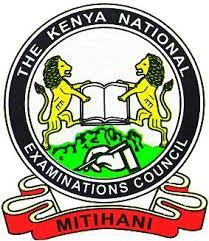
SECTION A (40 marks)
Answer ALL the questions in this section.
]. State the two divisions of Statistics. (2 marks)
2 A tailor sold a dress for Ksh 1,450 and made a profit of 25% Calculate the cost price of the dress. (2 marks)
3. Differentiate between price index number and quantity index number. (2 marks)
4. Calculate the sum of die sequence: 3.5,7.9 … up to 200* term. (2 marks)
5. A job can be completed in 20 days by 15 men, working 4 hours per day. Determine the number of days it will Lake 10 men, working 5 hours |ier day, to complete the same job. (2 marks)
6. An agent cams a commission of 5% on sales. In a given week, the agent made sales of Ksh 250000. Determine the amount of commission earned, (2 marks)
7. The marked price of a television set is Ksh 25,000. A tax of 25% is added to die marked price.
Determine the selling price of the television set. (2 marks)
8. Solve for the value of y in the following equation;
3(^ + 8) = 36 (2 marks)
9. The cost of a photocopying machine is Ksh 240 (XX). The machine is depreciated at the rate of 17% per annum. Determine the value of the machine after 5 years. (2 marks)
10. Distinguish between absolute error and relative error, as used in Statistics. (2 marks)
11. State the meaning of interquartile range. 12 marks)
12. An American tourist had $ 4.500 when he arrived in Kenya. He converted all the dollars intn Kenya shillings. He spent Ksh 375.000 and convened the balance into sterling pounds.
Determine the amount he received, in sterling pounds.
Take: I dollar = Ksh 120
1 sterling pound = Ksh 134 (3 marks)
13. Differentiate die equation: , with respect to (I mark)
14. The marks scored by 7 students in a Statistics test were: 57,94,80.58,66,75 and 60.
Calculate (he mean mark. (1 mark)
15. State two uses of regression analysis. (2 marks)
16. Mwema bought a refrigerator on hire purchase terms by paying a deposit of Ksh 12,000. The balance was to be paid in 36 et|ual monthly instalments of Ksh 2,41)0 each. The hire purchase price exceeded the cash price by 25%. Determine the cash price. (3 marks)
17. The letters of the word ‘article’ arc arranged randomly. Determine the probability that the letters a, i and e may occupy even places. (2 marks) •
18. State two characteristics of a well prepared graph. (2 marks)
19 A company insured a machine at Ksh 296,000,000. The annual premium was at the rate of Ksh 4 per Ksh 1,000. Calculate the amount of the annual premium (2 marks)
20. State two methods of classifying statistical data. (2 marks)
SECTION B (60 marks)
Answer ALL the questions in this section.
21. (a) Explain four uses of index numbers in an economy. (8 marks)
(b) The following information relates to the income of employees in a firm

22. (a) Loice deposited Ksh 1,200. (XX) in a savings account for two years. The money earns interest at the rate of 5% per annum, compounded annually. Determine the amount of money she received when interest was compounded:
(i) semi annually;
(ii) quarterly. (6 marks)
(b) The following are the ranks of 15 students in two examinations Statistics and Accounting:

Determine the Spearman’s Rank Correlation Coefficient. (9 marks)
23, (a) The marked price of a sofa set is Ksh 40,000. A cash discount of 5% is allowed on cash purchases. The sofa set may also be sold on hire purchase terms by paying a deposit of Ksh 100000 and tire balance in 24 equal monthly instalments. The hire purchase price is
more than the cash price by 12,5%.
Determine the:
(i) hire purchase price;
(ii) amount of monthly instalment;
(iii) difference between the hire purchase price and the cash price.
The following table represents marks scored by a candidate in five 51 subjects were assigned weights of 1.2. 1.3 and 3, respectively:

a) Outline three factors that a researcher should consider before collecting statistical data. (6 marks)
[bl A sample study of coffee consumption by residents of two towns: A and B, revealed the hil lowing information;
Town A: Ft males were 40%; total coffee drinkers were 45%, Male non-coffee drinkers were 20%.
Town B: Males were 55%; male non-cotTee drinkers were 30%; and female coffee drinkers were 15%.
Present the above information in a tabular form
